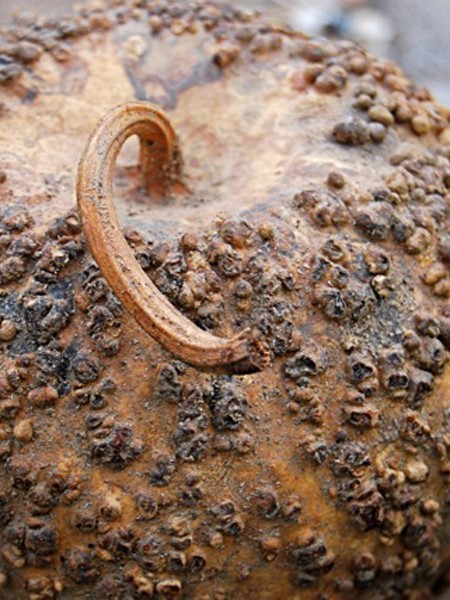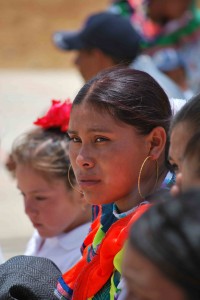A few days ago, my language helper told me the tale of the first man and woman. It’s a fascinating story that echoes some of the Nahuatl values and points of view. I’m sure you’ll recognize some familiar imagery, as well.
When the world was lost, it filled with water. Everything was gone. And when that was happening, there was a boat, like the gourds that the ancestors used to plant. A man and his dog put themselves inside. When the water rose, they rose, too. When the water receded, there they stayed on the ground. But the ground was tender, so they didn’t get out; they stayed in the boat for many days.

They sent a bird—the kind that lives near the water, the kind that is somewhat like a duck, the kind that you can hear making its sounds near the river. They sent this bird out from the boat to feel the ground and see how it was. It’s not heavy and it wouldn’t get stuck; if the ground was still tender, it could fly away.
The ground was still tender; they could not leave. For more days they stayed there until they knew that the ground began to be seasoned or mature. So they got out. The man got out and took the dog out. And there was their house. There they lived. Then he started to work; the man softened the ground and planted. And then he would go to work. He would arrive at home in the afternoon and make his food.
And so it went for some time. Then he started getting home and tortillas were made. And he wondered what it was. He thought a lot about what it was. He would get home and only the dog was there.

So, he went. One time he went in the morning. But he didn’t go; he stayed there checking close by so that he could figure out what. He saw that a woman came out. She came out from inside and went around the house and was grinding corn. He saw her. Later, the man ran to the house. He saw that at the door was her hair. The dog’s hair. She had taken it off and put on a dress.
The man quickly grabbed the hair and he put it in the stove so that it would burn (the woman was making tortillas so that’s why the stove was lit). He thought that if he did that, the dog would have to stay as a woman and be his woman. That’s why quickly he burned it so that she couldn’t go back to being a dog. The woman said to him, “Don’t burn it; it’s my shirt.” But he didn’t listen to her. She began to cry. She became sad.
But the man thought that she should be his woman, because he was tired of being alone. That’s how he saw it. She could be his cook and it would be better. The woman couldn’t do anything about it anymore. She was people. They lived together. They had kids—boys and girls. And from them came all the people that are of “the race”—Huicholes, and Tepehuanes, and Cora and us—lots of people. Who knows where white people came from.
So the man worked. And they had many things: goats, cows, chickens—many things. Who knows where those animals came from, but they had them. And that’s how the world is from then until now. Even though it’s a long time since all that happened, the world is still the same. It doesn’t change. That’s how it happened. That’s how they say it happened.

That’s why we know now that we women aren’t clean people. Not clean like the men. We have a rib from a dog and a rib from a person. Our mother was a dog and the men’s father was a person. We aren’t like the men. That’s why it’s better to find a wife from far, far away and ask her and see if she’s in agreement with being your wife. It’s better that way. We women don’t remember well and that’s why. Who knows if it’s true or not. It’s a tale. Well, I say a tale because we don’t see it happening right now.
[…] Contact « After the World Was Lost […]